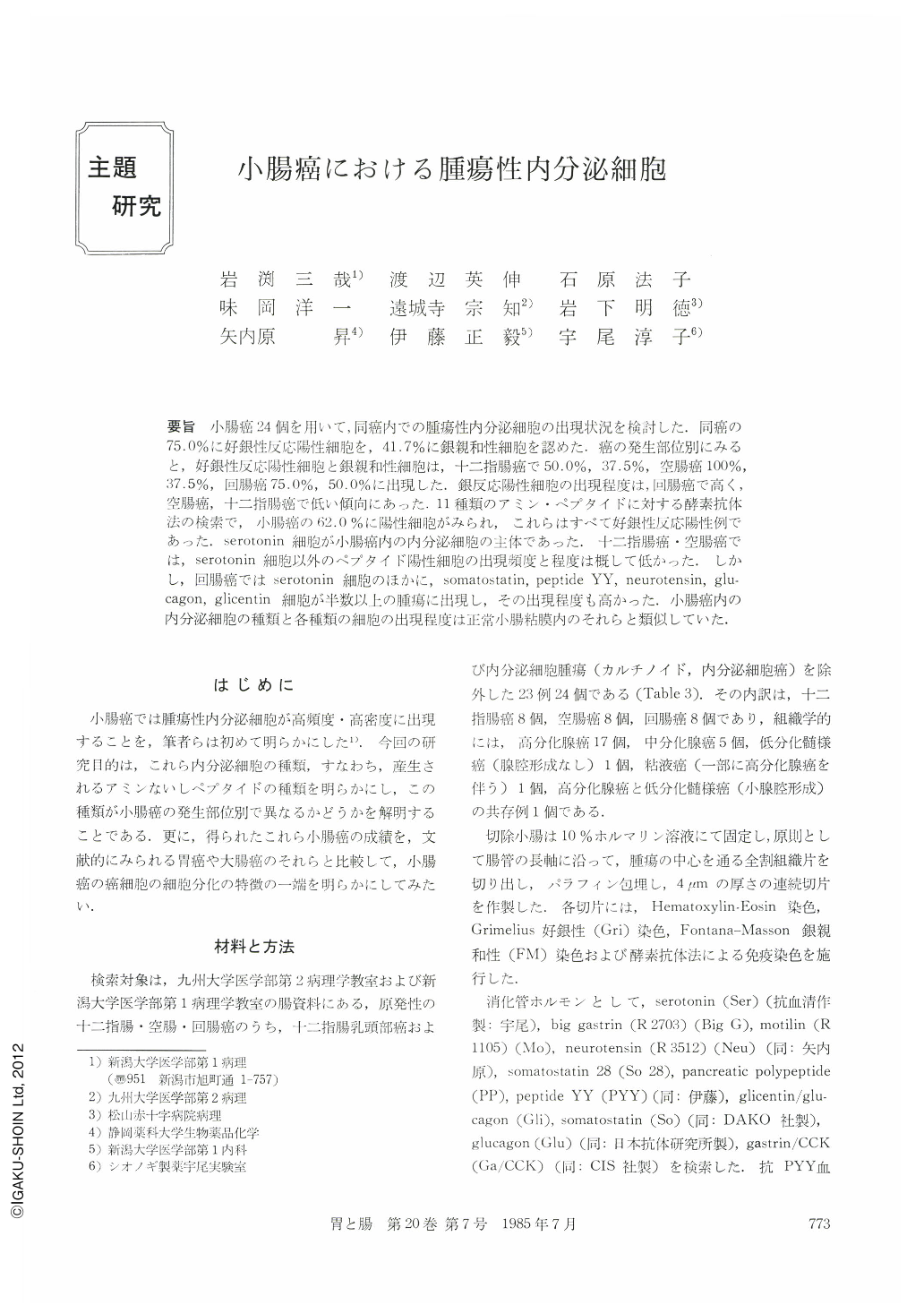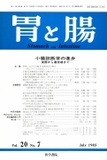Japanese
English
- 有料閲覧
- Abstract 文献概要
- 1ページ目 Look Inside
要旨 小腸癌24個を用いて,同癌内での腫瘍性内分泌細胞の出現状況を検討した.同癌の75.0%に好銀性反応陽性細胞を,41.7%に銀親和性細胞を認めた.癌の発生部位別にみると,好銀性反応陽性細胞と銀親和性細胞は,十二指腸癌で50.0%,37.5%,空腸癌100%,37.5%,回腸癌75.0%,50.0%に出現した.銀反応陽陸細胞の出現程度は,回腸癌で高く,空腸癌,十二指腸癌で低い傾向にあった.11種類のアミン・ペプタイドに対する酵素抗体法の検索で,小腸癌の62.0%に陽性細胞がみられ,これらはすべて好銀性反応陽性例であった.serotonin細胞が小腸癌内の内分泌細胞の主体であった.十二指腸癌・空腸癌では,serotonin細胞以外のべプタイド陽性細胞の出現頻度と程度は概して低かった.しかし,回腸癌ではserotonin細胞のほかに,somatostatin,peptide YY,neurotensin,glucagon,glicentin細胞が半数以上の腫瘍に出現し,その出現程度も高かった.小腸癌内の内分泌細胞の種類と各種類の細胞の出現程度は正常小腸粘膜内のそれらと類似していた.
Twenty-four primary carcinomas of the small intestine were examined by Grimelius' argyrophil stain, Fontana-Mason's argentaffin stain, and immunoperoxidase stains with antisera against 11 kinds of amine and peptides. Inaddition, the distribution and frequency of 11 kinds of endocrine cells in non-neoplastic mucosa of the small intestine were investigated.
In the non-neoplastic mucosa, the argyrophil-positive endocrine cells were found more frequently in the upper small intestine than in the lower. The majority (40-82%) of them were immunoreactive serotonin cells.
Neoplastic argyrophil-positive cells and argentaffin cells were found in 75.0% and 41.7% of tumors examined, respectively. The frequency and the densiry of the neoplastic endocrine cells were far higher in the ileal tumors than in the jejunal and duodenal ones. These cells tended to occur in parts of well differentiated adenocarcinomas.
Immunohistochemically, immunoreactive neoplastic endocrine cells were recognized in 62.5% of tumors, all of which were argyrophil-positive. Immunoreactive serotonin cells were seen most frequently and most densely. In the duodenal tumors and in the jejunal ones, five and nine kinds of peptide-positive cells were detected, in addition to the serotonin cells, However, peptide-positive cells were generally fine in number.
In the ileal tumors, in general neoplastic endocrine cells positive for serotonin and seven kinds of peptides occurred frequently and densely Four of 24 tumors contained only one kind of immunoreactive cells. Four other tumors contained two kinds of positive cells and seven tumors produced more than five kinds of immunoreactive amine and peptides. Most tumors with many kinds of immunoreactive cells were found in the ileum. The kinds and proportion of immunoreactive endocrine cells in tumors were generally similar to those in the non-neoplastic mucosa of each site where tumors occurred.
In conclusion, the frequency and the density of neoplastic endocrine cells in carcinomas of the small intestine were generally high. However, a regional difference in the frequency and the variety of positive cells was also discerned.

Copyright © 1985, Igaku-Shoin Ltd. All rights reserved.


